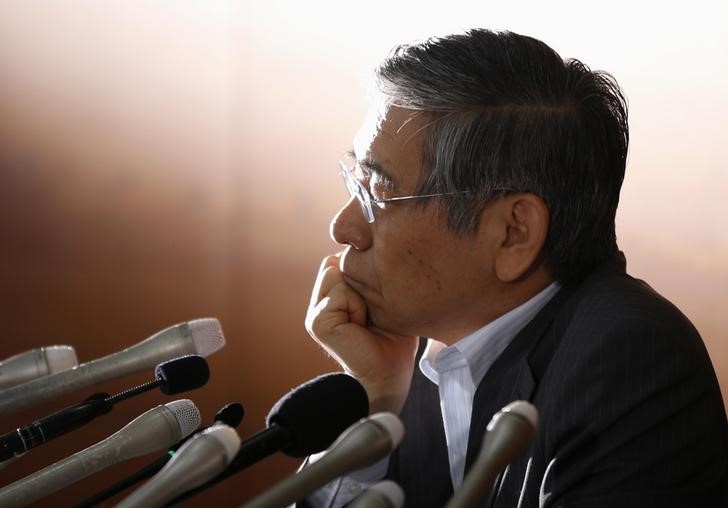(Bloomberg) -- Bank of Japan Governor Haruhiko Kuroda issued an emergency statement following a week of turmoil in markets over the economic implications of a coronavirus outbreak spreading around the world.
In the release, which comes after the Federal Reserve issued an unscheduled statement on Friday, Kuroda said the BOJ “will strive to provide ample liquidity and ensure stability in financial markets through appropriate market operations and asset purchases.”
Fed Ready to Cut Rates Despite Doubt They Can Offset Virus
The BOJ quickly showed what kind of action it would take by offering to buy 500 billion yen ($4.6 billion) of government bonds with a repurchase agreement to provide liquidity to market participants.
The statement didn’t clarify the range of measures the BOJ could employ. The bank could also ramp up other asset purchases, such as exchange-trade fund buying, or conduct other emergency operations to secure liquidity to maintain stability in Japan’s markets.
Kuroda’s pledge and subsequent offer pushed Japanese stocks back toward gains from losses in Monday trading and weakened the yen.
“The Fed statement and a plunge in stock markets pushed Kuroda to issue the statement,” said Naomi Muguruma, a senior market economist at Mitsubishi UFJ Morgan Stanley (NYSE:MS) Securities Co. She said the operation as a signal to show the BOJ’s willingness to take action, but characterized it as a preemptive move, given that there is still no shortage of funds in the markets.
In the Fed’s statement on Friday, Chairman Jerome Powell opened the door to a rate-cut at the Fed’s March 17-18 meeting by pledging to “act as appropriate” to support the economy. Traders and Wall Street banks now expect the Fed to lower rates in the coming weeks. Goldman Sachs Group Inc (NYSE:GS). economists said Sunday the Fed may even act before its official gathering and perhaps in coordination with other central banks.
Yen Factor
The Kuroda statement doesn’t go as far as the Fed’s, Muguruma said, reiterating her view that the BOJ is not likely to lower its negative interest rate given the mounting side effects of the bank’s easing program.
“The difference is that the BOJ emphasized it’s taking actions for the stability of markets while the Fed suggested further easing. Today’s statement doesn’t change my view that there is no easing in coming months.”
Economists see the yen as one of the key factors for assessing how willing the BOJ will be prepared to engage its main policy levers, should the jitters surrounding the virus outbreak deteriorate further.
“I think the BOJ will be on high alert should the dollar yen fall below 105,” said Yuichi Kodama at Meiji Yasuda Life Insurance, noting the increased likelihood of Fed rate cuts could strengthen Japan’s currency.
The yen was trading around 107.98 against the dollar at 11:15 a.m., having weakened from 107.46 immediately before the BOJ released its statement.
